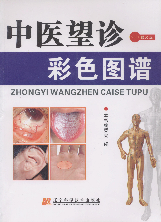
主要责任者: 本书编委会
责任方式: 编
出版者: 辽宁科学技术出版社
出版地: 沈阳
字数: 200 千字
页码: 1-126
开本: 16
中图分类号: R241.2-64
装帧: 简
语种:中
定价:80.00
出版时间:2008-09
丛书多卷书否:否
书目简介:本册工具书共收录210条词条。
被引频次:1

主要责任者: 张家锡
责任方式: 总主编
出版者: 四川科学技术出版社
出版地: 成都
字数: 230 千字
页码: 1-140
开本: 16
中图分类号: R241.2-64
装帧: 简
语种:中
定价:50.00
出版时间:2006-09
丛书多卷书否:否
书目简介:本册工具书共收录295条词条。